When Directors Push Actors Too Far
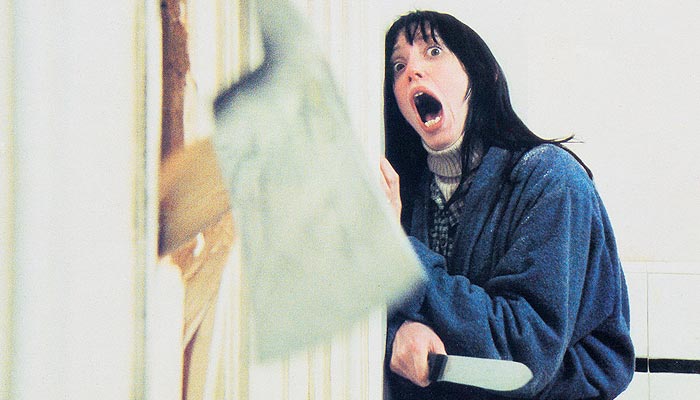
Stanley Kubrick’s The Shining (1980) is one of the most iconic horror movies of all time. However, it is also one of the more controversial due to its portrayal of Wendy Torrance and treatment of her actress, Shelley Duvall. Duvall endured sleep deprivation, isolation from the other cast members, and verbal abuse from Kubrick himself. One scene in particular drove Duvall to the brink: After discovering her husband has gone mad, Wendy is forced to defend herself using a baseball bat. That scene had to be reshot 127 times before Kubrick was satisfied. Duvall reportedly started losing her hair and suffered a nervous breakdown as a result.
This example is one of many instances where movie directors pushed their stars to the limit in order to achieve “perfection”. Below are several more cases of people being forced to endure harsh conditions, stray far out of their comfort zone, or even enter into potentially fatal situations for filming. The focus will be on actresses, but some male actors will also be included.
Warning: Disturbing content and potential spoilers.
Tippi Hedren in Alfred Hitchcock’s The Birds and Marnie
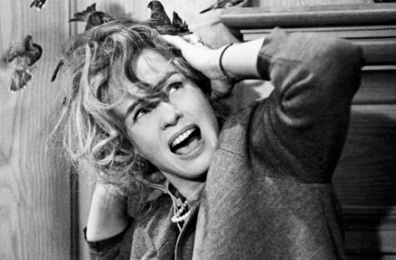
Alfred Hitchcock was notorious (pun not intended) for his female leads. Tippi Hedren is perhaps the actress who suffered the most. Her screen debut was in the 1963 film The Birds, and Hitchcock personally oversaw her training, to the extent that he coached her on what to eat, drink, and wear. He was very controlling, but at first the shooting went well. Then, there came the final bird attack scene.
Hedren was assured that only mechanical birds would be used; although it wouldn’t be as realistic, she would be guaranteed safety. However, Hitchcock instead released live crows, ravens, and gulls into the room where the scene was shot over a five-day period. Though the birds’ beaks were clamped shut, Hedren’s cheek was scratched and she almost lost an eye. A doctor ordered her to take a week off to rest.
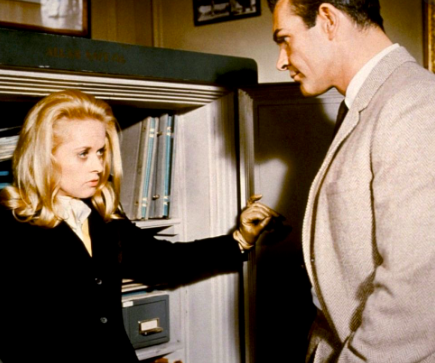
Unfortunately, it wasn’t the end for Hedren. Due to her contract, she couldn’t appear in films other than those directed by Hitchcock. In 1964, she starred as the titular heroine in his thriller Marnie alongside Sean Connery. On set, Hitchcock told the other actors not to come physically close to her, and he kept her in isolation from the rest of the cast. To make matters worse, he allegedly made sexual advances towards Hedren. It didn’t help that Hedren’s character in the film was constantly mistreated by Connery’s.
Maria Schneider in Bernardo Bertolucci’s Last Tango in Paris
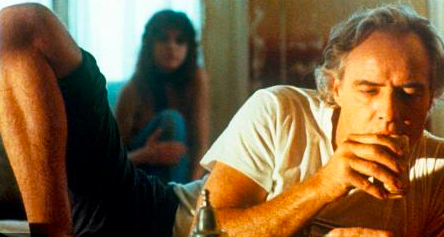
Shooting a sex scene can be very uncomfortable. For 19-year-old Maria Schneider, who starred opposite Marlon Brando in 1972’s Last Tango in Paris, it was traumatizing. The movie already featured several nude scenes with the then-48-year-old Brando. Then came the infamous rape scene with Brando, featuring a stick of butter – which was not in the script and came as a shock to Schneider.
Bertolucci said that the scene was withheld from Schneider because he wanted to generate a “reaction of frustration and rage.” It worked too well. Following the film’s release, Schneider was hounded by the press and seen primarily as a sex symbol. The experience turned her off future nude roles, and she struggled from depression and drug addiction, attempting suicide several times. Bertolucci didn’t get away with that scene. Many copies of Last Tango were destroyed, Bertolucci’s civil rights were revoked for five years, and he was given a four-month suspended prison sentence.
Mary Elizabeth Mastrantonio in James Cameron’s The Abyss
James Cameron is apparently one of the more difficult directors to work with. He has been called “dictatorial”, pushing many people to the edge. Quite a few actors have stated that they would never work with Cameron again, most famously Kate Winslet, who allegedly almost drowned filming 1999’s Titanic.
However, there was another actress who had a bad experience in a Cameron film. Coincidentally, it also involves water. Mary Elizabeth Mastrantonio played the female lead in 1989’s The Abyss, which takes place deep underwater. Like the crew of Titanic, Mastrantonio and her colleagues underwent their share of water woes: long days of shooting with no bathroom breaks, hysterical breakdowns due to stress, and even prolonged exposure to chlorine that turned their hair white and burned their skin.
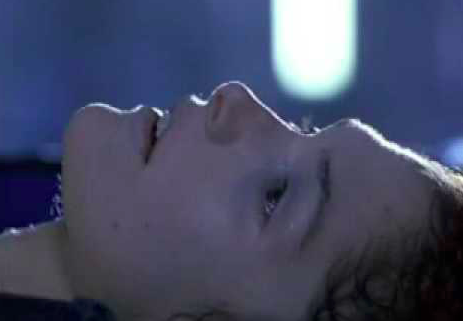
However, it was one scene that nearly did it for Mastrantonio. Towards the end of the film, her character sacrifices herself to save her peers. In other words, she tries to drown herself. Virgil “Bud” Brigman (her estranged husband), played by Ed Harris, is able to revive her by screaming and slapping at her. Unfortunately for Mastrantonio, the screaming and slapping went on even after the camera ran out of film! Cameron directed Harris to do the shots several times, since the actor reportedly kept messing it up. Mastrantonio didn’t take kindly to her treatment, standing up and screaming “We are not animals” before storming off set and leaving Harris to continue with a sandbag. She has since stated that she will never appear in another Cameron film and, unlike Winslet (who will be in Avatar 2), it’s unlikely she’ll change her mind.
Ellen Burstyn in William Friedkin’s The Exorcist
Conditions on the set of 1973’s The Exorcist were, to put it bluntly, chaotic. Besides the claims of supernatural occurrences, there were the conditions director Friedkin subjected his cast to. Linda Blair, who plays the possessed Regan McNeil, had to shoot scenes at night wearing a thin nightgown. Father William O’Malley, who played Father Joseph Dyer, was slapped by Friedkin in order to get a more “solemn” expression (offending many of the Catholics on the set). Friedkin also had the unpleasant habit of shooting prop guns at his actors to get surprised expressions from them.
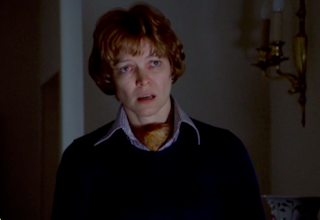
However, things got very serious during a scene where Regan slaps her mother, played by Ellen Burstyn, who falls to the floor. Despite both actresses being strapped in harnesses, Burstyn landed hard on her coccyx. Friedkin promised not to jerk her around so much, but did it anyway. Burstyn permanently injured her back; the scream she gives in the finished movie was a genuine scream of pain.
Martin Sheen in Francis Ford Coppola’s Apocalypse Now
The filming of 1979’s Apocalypse Now was plagued with all kinds of trouble. Typhoon Olga destroyed many of the sets in the Philippines and shut down production for about a month, there was widespread drug use among the crew, and one of the actors had to be replaced. Francis Ford Coppola faced a great amount of stress during production, and afterwards faced scrutiny for killing a live water buffalo at the film’s ending.
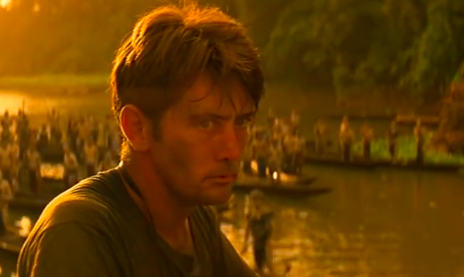
However, his treatment of Martin Sheen, who plays Captain Willard, was more questionable. He repeatedly told Sheen he (the actor) was evil, kept him drunk and locked up before shooting the opening scene, and even got into an argument with him when production was stalled. As a result, Sheen developed unhealthy habits, most notably an increase in smoking. On his return to the Philippines, he had both a heart attack and a nervous breakdown. Coppola felt so guilty that he suffered an epileptic seizure not long after.
Entire Cast, The Texas Chainsaw Massacre, The Revenant, and The Blair Witch Project
Tobe Hooper turned the entire cast of The Texas Chainsaw Massacre against him due to extreme heat, rotting food, and an actual finger amputation on set. Alejandro G. Iñárritu lost many of his cast members while filming The Revenant due to harsh, very cold, conditions. In Hooper’s case, it was due to the low budget, while for Iñárritu it was all about realism and staying true to the story the film was based on.
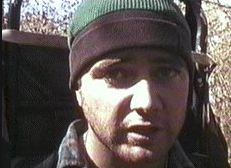
Eduardo Sanchez and Daniel Myricks’ tactics for 1999’s The Blair Witch Project went even further in order to evoke fear and disorientation in the young stars. Donahue, Williams, and Leonard were told to improvise most of their scenes and do their own filming. The directors stalked the actors during the day and rattled their tents by night, while also progressively starving them. In this case, pretty much every scene was manipulated by the directors. The film is considered a classic now, but it doesn’t justify the actions taken by Sanchez and Myricks.
Raymond Massey in Elia Kazan’s East of Eden
Sometimes it’s not dangerous conditions or extreme discomfort that will do it for an actor. Sometimes it’s just plain mischief. Such is the case behind Elia Kazan’s attempt to get genuine anger from Raymond Massey, one of the stars from his 1955 film East of Eden. And boy, did he get it.
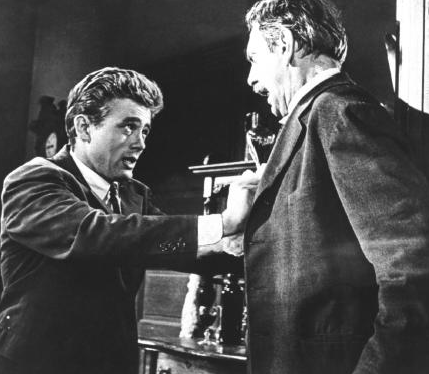
Massey plays Adam Trask, a farmer and the strict father of Caleb Trask, played by James Dean. Dean would annoy Massey offstage, so that the older actor would more easily show the hate his character has towards Dean’s. (This technique is part of what is called “method acting”, where an actor uses his own experiences and everyday interactions/mannerisms to play an actor. Dean and Marlon Brando are some of the better known method actors.) Of course, Kazan let Dean’s behaviour continue towards Massey, causing some unnecessary tension between the actors that eventually boiled over.
Massey had been acting stiff for one scene (his character is angry at Dean’s for how he reads from the Bible) and Kazan was not amused. So he gave Dean some pointers and, lo and behold, Massey was so offended by the vulgar language Dean used that he stormed off and threatened to call his lawyers. Kazan may have gotten the results he wanted, but his approach was a little underhanded. He was lucky Massey didn’t go through with his threat or, worse, leave the production altogether.
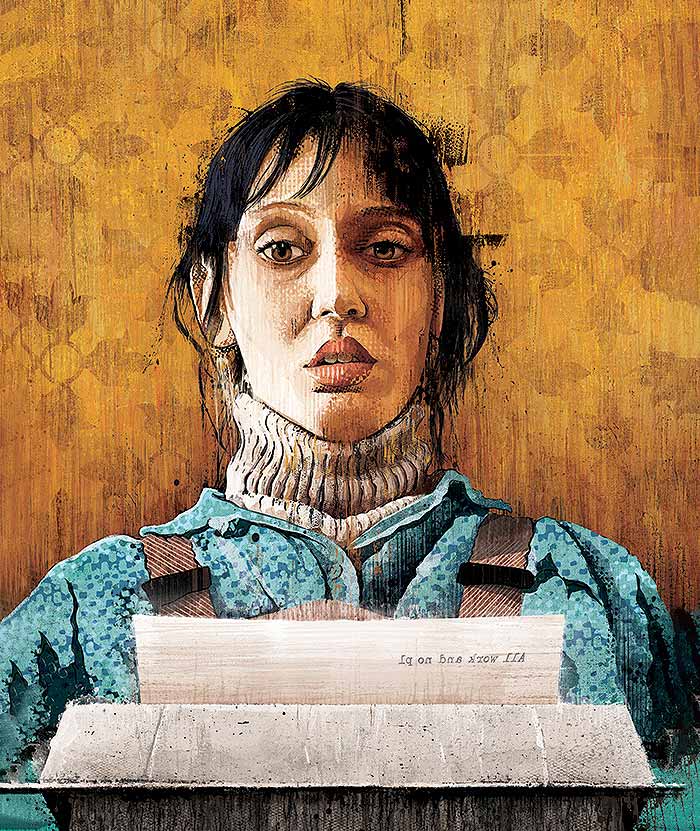
In the wake of #MeToo and more rights and protection given to actors, directing techniques such as the ones in this article will most likely not be used anymore. However, there are still changes that need to be made, which won’t be easy given what human nature is like. Hopefully, they’ll be ones that will lend a scene the authenticity the director desires without costing the comfort or lives of the cast and crew.
Works Cited
Wikipedia contributors. “Tippi Hedren.” Wikipedia, The Free Encyclopedia, https://en.wikipedia.org/wiki/Tippi_Hedren#The_Birds_(1963). Last accessed 3 June 2020.
Wikipedia contributors. “Maria Schneider (actress).” Wikipedia, The Free Encyclopedia, https://en.wikipedia.org/wiki/Maria_Schneider_(actress)#Last_Tango_in_Paris_and_related_controversies. Last accessed 3 June 2020.
Donaldson, Kayleigh. “The Abyss Turns 30: How James Cameron Pushed Boundaries and Almost Killed His Actors.” Syfy Wire, 9 August 2019, https://www.syfy.com/syfywire/the-abyss-turns-30-how-james-cameron-pushed-boundaries-and-almost-killed-his-actors. Last accessed 16 June 2020.
Wikipedia contributors. “The Exorcist.” Wikipedia, The Free Encyclopedia, https://en.wikipedia.org/wiki/The_Exorcist_(film)#Direction. Last accessed 3 June 2020.
Vallely, Jean. “Martin Sheen: Heart of Darkness Heart of Gold.” Rolling Stone, 1 November 1979, https://www.rollingstone.com/movies/movie-news/martin-sheen-heart-of-darkness-heart-of-gold-80879/. Last accessed 3 June 2020.
Sellers, Robert. “The strained making of ‘Apocalypse Now’.” The Independent, 24 July 2009, https://www.independent.co.uk/arts-entertainment/films/features/the-strained-making-of-apocalypse-now-1758689.html. Last accessed 3 June 2020.
Wikipedia contributors. “The Blair Witch Project.” Wikipedia, The Free Encyclopedia, https://en.wikipedia.org/wiki/The_Blair_Witch_Project#Pre-production. Last accessed 3 June 2020.
Wikipedia contributors. “East of Eden (film).” Wikipedia, The Free Encyclopedia, https://en.wikipedia.org/wiki/East_of_Eden_(film)#Filming. Last accessed 16 June 2020.
What do you think? Leave a comment.











Actors shouldn’t have to suffer for their work. It’s unnecessary and goes unnoticed by the audience.
Some of the most talented and timeless artistic expressions were created by people who were neither paid nor appreciated in their own time.
Interesting article.
On the one hand, films and directors like Kubrick, Hitchcock, Fincher, von Trier are the very BEST examples of borderline-abusive actor/director relationships. Actors get exploited in all kinds of ways in every kind of production – if they have a great film at the end of it they are quite lucky, and very much the exception. Most just have the terrifying experience and are told it’s all ‘part of the job’.
But on the other hand – with these directors in particular you do have ‘artists’ who strive for authenticity in their work, and feel like they’d be letting down the film, crew and audience if they didn’t strive for every possible attention to detail. I think it’s highly likely that Shelley Duvall wouldn’t have put up with that abuse from any director except Kubrick, and that most von Trier actresses know what they’re getting themselves into. (I think Kirsten Dunst inferred similar sentiment after Melancholia came out…?)
So i think it’s down to judgement on the actor’s behalf – and in fairness a good director will be quite forthcoming about the demands of a particular role early in the casting process. Every star in a Fincher film know’s he’ll likely do take after take of every single scene, and some even enjoy it. Should they put themselves through this? If they want to, and if within certain tasteful guidelines (although christ knows what that would be in von Trier’s case…), i think they should.
Maybe they should go on set with their agents so they are not forced to do anything they don’t want to do, films would be much better then…
A good essay. Really, The Texas Chainsaw Massacre–my sister and I enjoyed watching that years ago. She keeps trying to get her husband to watch this pleasant, gentle movie with her.
Great article. I’d enjoy seeing a follow-up or “sequel” that talked more about these roles from the perspective of, what does it take to devote yourself to a role in which the character undergoes extreme physical, mental, and emotional trauma? Can an actor expect to be healthy after that, and what does it take to maintain or regain health?
Sadly, the film industry is exactly that – an industry – and its focus is on product and profit. All actors are aware that they can be replaced very easily and despite whatever clauses that may written into their contracts, there’s always a director who will push the limits. Once an actor has stepped over the line, a new precedent has been set. That’s why I decided to get out of the game. Sitting in the back of an ambulance with 2nd Stage Hypothermia, after 20 resets and being exposed to high winds, rain, sleet and snow, in temperatures of -15 Deg C, is no joke.
It’s truly disturbing to see that these things happen behind the scenes. I haven’t seen any of the above films. However, I do wonder if learning this information would make me see them differently if I had. I dare say it would.
Interesting article!
Rather these ‘trouble’ caused by artistry and perfectionism than a Michael Bay CGI-fest.
Have observed directors do these type of things to actors with my own eyes. Its always been because the director didn’t really know what they wanted, or trust the actor enough that they could arrive at something for themselves.
I have turned down work with certain people because of it.
Althea. It’s good to hear another voice from the inside. I completely agree with everything you stated.
Even worse when its with student actors – massive abuse of power and trust.
Drama schools indulge in a lot of abusive behaviour towards their students for many reasons all interpreted as being for the students’ good. This weeds out sensitive and vulnerable people who are of course no use to a creative profession.
There was a very nasty piece on a R4 subject about drama schools some years ago when a young woman at Simon Callow’s alma mater was mistreated so badly even the presenter commented on it.
After I left my drama school, due to bullying and sexual harassment, a solicitor told me any claim would fail because the defence of character-building would be entered.
Later still I was a witness in a case concerning a former drama student and the school she’d attended. When evidence was given about some abusive behaviour on the part of the staff the judge interrupted to say “But surely an actress must do whatever she’s told and has no right to object?”
One of my directors tried to get into the female students’ dressing-room when they were changing so I barred the door. He crashed and banged against it – quite a famous man, by the way – yelling “You’re in the theatre now!” Would this be the sort of compliance the judge was indicating, I wonder?
I don’t mind when artists suffer for their art. It’s when the audience suffers that I take exception.
We need to stop thinking that this kind of actual suffering leads to a better performance. This is a completely stupid idea, and we like it because it bolsters our cognitive bias. You do not have to feel something genuinely in order to make it look real – this has been proven again and again by artists both in front of the camera and behind it, as opposed to the reckless psychological abuse we see in these edgy and exciting works.
What is it about them that we’re drawn to – is it the little psychopath in all of us that wants to be so shitty to the world and get all the accolades? Sheesh.
I seem to recall mention of one director filming out in an East European toxic waste site because he wanted a post-apocalyptic scenery. According to the report I read, a significant number of the cast died from exposure to the waste.
Now, I don’t know if that account is correct. What am I going to do, go grave robbing to look for toxic chemical residue? Always assuming I can identify who is supposed to have died as a result or where I would look for their graves. And as this is supposed to have happened some time ago, I’d need serious analytical hardware to detect traces. So, a mobile lab and a small fleet of aircraft to carry it. I’ll leave that to those rich enough to care and who didn’t sell that part of their mind -to- become rich enough to care.
But the fact is, the story exists because it’s not unbelievable a producer would destroy their actors. We know they take exceptionally great risks with stuntmen in order to save a few bucks on a camera, and we’ve all heard tales of stuntmen dying as a result of multiple takes. We also know that actors have died from movies being rushed and mistakes being made. Nobody with time to think leaves a packing rod in a loaded firearm. Basic safety is drilled into prop experts to the point it is almost a part of their very cells.
So, the idea that a smaller film studio would ignore the deadly peril the cast was really in – in Mythbuster terms, plausible. Not verified, confirmed or proven, but definitely plausible.
These directors in the article didn’t go that far, but do they exhibit the same logic? Trauma – you never fully recover from it. Sometimes, you never recover at all. In rare cases, it will trigger irreversible schizophrenia. It isn’t predictable. O Levels have caused all of those, as have times of war. It is debatable as to which causes more of the extreme cases.
Real violence – people do not become actors because of their ability to handle injuries. Blood clots forming or going where they shouldn’t – I know the actor who played Hercules on the American live-action tv series was nearly killed by one, but I don’t believe that was related to the tv work. I also know the odds of dying from two concussions in the same week is about one in a million. Here, I see the potential for scars when lobbed through windows (I speak from experience) but it’s more likely to have had a permanent emotional impact.
Is physical or emotional trauma likely to produce a better actor? Once upon a time (and, reportedly, still to this day), producers and directors made sure cocaine and alcohol were easily available. Broadcast interviews with British writers and directors visiting American studios have sometimes claimed prostitutes were supplied gratis.
Are sex, drug and/or alcohol addicts superior actors? If the answer is no, even if it is a dead heat, then the subjective impression by the same people that sick, traumatized and/or disfigured actors are superior should not be accepted without considerable thought.
– Are sex, drug and/or alchocol addicts superior actors?
Different strokes, for different folks. That questions requires revision: Are superior actors sex, drug and/or alchocol addicts?
Some are, and they may need those strokes to get anything worthwhile out of them.
Has Downey Junior done anything as good since he kicked crack and smack?
Did Anthony Hopkins do anything good until he kicked the bottle?
With Tippi Hedren, I can see why Hitchcock was driven to use extraordinary methods.
And neither do you mind posting commercial advertising in the topics suggestion section.
This is a deeply meaningful article about a major problem in contemporary cinema.
I can see why a director can be frustrated and / or might try to manipulate and psychologically breakdown their cast, the actors are the only aspect of the composition they cant truly control – its similar to my experience of being a teacher, you can create all the best resources, perform perfect lessons, but that uncontrollable element of a students’ free will to not give a shit is always there to fuck things up
You do not need to bully and actor to get a good performance in a film or at drama school, just be a good director or teacher which in my mind = sensitive to the performer . Many film Director’s are not taught how to direct actors or how to act, and so make it up. Much of the time at Drama School is spent learning how to distance yourself from the Character you are playing based on Stanislavski’s theories which take a more intellectual approach to creating character. (or at least it should be – I realise there are certain Drama Schools that act more like a ‘Cult’).
To make someone suffer mentally and physically is wrong whatever profession it is. One wonders why those directors who like to use women and men with little acting knowledge or experience to then bully a performance out of them do it. There are plenty of Great Directors who make wonderful films with great performances from their actors without this nonsense. BTW the same goes for the rest of the Crew involved in theatre and film making who also get bullied. Behaviour that is deemed illegal in a workplace or education establishment should could for all. We are all human beings
Many actors are exposed to really gruelling life experiences. Thanks for writing this.
At the risk of being yet another Kubrick-nutter, I have to point out that it wasn’t just Shelley Duvall – or just women – that Kubrick was horrible to. Malcolm McDowell was nearly blinded and drowned making Clockwork Orange, whilst the whole (white, male) cast of Full Metal Jacket got pounded into the ground as much as Duvall ever did. However most actors – male or female – who worked with Kubrick absolutely loved him.
I feel for the sake of balance it’s worth noting the many male directors who have great relationships with female actors – Scorcese, Allen, Malick immediately spring to mind – the latter two often get complaints from male actors whose precious egos are bruised by all the attention the women are getting on set. I actually think that in most cases directors who are bastards tend to be equal-ops bastards.
Some of the most enduring pieces of art were forged not in spite of suffering, but rather, because of it. And that is very sad.
Back at the dawn of cinema, a film maker tried one of the first editing experiments taking footage of a baby crying and cutting it to a scene shot 6 months later of a witchy looking woman looking menacing..
Everyone praised the baby’s acting towards the evil looking woman.
I was always assumed that these stories were less about the actual performance on screen (a miniscule difference, for the most part) and more about the mythology of a film/scene/actor/director.
David Fincher routinely does 50+ takes. Seems to work for him.
Having said that, there’s a pretty low number of actors who’ve worked in more than one Fincher film…
Stanley Kubrick was famous for taking over a hundred takes of a scene if he didn’t think he’s got it right. To my eye his later films, like “Eyes Wide Shut” and the like look very wooden, probably because by the time he got what he wanted in the can everyone had forgotten what the shot was about.
I think the abuse of power starts on the casting couch…Hollywood is corrupt.
If the director has to do bad things to an actor, it’s probably an issue with casting and the director themselves.
Some Directors are clearly deranged and should be told to get lost.
Perfection is not bad but an obsession for perfection is really bad. Artists should stand up and speak against it after all they are humans.
The relationship between employees and employers is often fraught with ethical quandaries. General workplace. Bullies, ego trips, power hungry, lazy, etc.
Good article. I had to do a bit of research on Fritz Lang’s Metropolis for my podcast and I found some very upsetting information.
I’m surprised nobody died on that set. Because health and safety regulations weren’t a thing, Lang proceeded to endanger the lives of the actors many times.
Brigitte Helm said of working with Lang:
“the night shots lasted three weeks, and even if they did lead to the greatest dramatic moments – even if we did follow Fritz Lang’s directions as though in a trance, enthusiastic and enraptured at the same time – I can’t forget the incredible strain that they put us under. The work wasn’t easy, and the authenticity in the portrayal ended up testing our nerves now and then. Once I even fainted.”
It would be easier to suggest that this was all part of the job if the majority of these kind of cases did not involve the abuse of a single person.
If the only way you can get the desired results for a film is to abuse someone, then either the actor(s) is not very good or the director isn’t.
There should be no tolerance of this kind of behaviour. Artistic license is not a right to abuse people.
This is such an interesting, and terrifying, article. It’s scary to think that some of the screams and reactions of actors in these horror films are real? The fact that many of these directors are still working and have had no repercussions for starving or hurting people in order to get the ‘best shot’ is awful to think about. Abusive behaviour shouldn’t be seen as realistic artistry.
Great article! I recently saw The Shining and you can just see how distressed and exhausted Shelley Duvall is, it’s sad to watch. I understand directors wanting an authentic performance from the actors and actresses in their project, but pushing them to such an extreme degree is too far. At that point, it is just abusive behaviour.
Shelley Duvall is an incredible actress and gets so much hate for her role in The Shining. It always pains me to read about the suffering she endured on set – I always wonder how, for decades, this behavior was allowed from directors. I never understand why extreme, aggressive directorial styles are seen are crucial to the production of masterful art. To me it seems rooted in patriarchal practices of abusing women into performing to the peak of their desires. Multiple articles could blossom from this article alone. Great work!
What a great read. It is interesting (though probably not surprising) that so many of these abuses occurred on horror movie sets. I would love to see a follow-up of this in which some of the actress’s horror experiences in the specific scenes and their real-life resulting trauma are explored a bit more extensively because the gendered implications of the male director/actress, male/female character and actor/actress dynamics are so interesting.
Interesting and important article. It’s a shame that most of the directors you mentioned are praised for their genius and perfectionism which promotes this kind of malicious behaviour. I hope the misinformed idea of abuse leading to good performance dies down as there are many less abusive (and better) ways to craft compelling performances. Abusing actors to get a “performance” out of them is not genius, innovative or daring, but lazy and unethical.
It’s interesting to read about Alejandro G. Iñárritu’s treatment of his cast when he won the Academy Award for Best Directing for The Revenant. It really shows how much goes on behind the scenes that isn’t taken into account. I wonder how those people who worked on the film felt about his win.
Actors in their work have risks when coming up to elements such as method acting and abusive directors. I always have thought back upon The Texas Chainsaw Massacre and how the cast was treated, be it if that was budget, the time it was shot in, or plain ignorance. The cast endured lots of hardships and while we have a memorable movie, it is hard to forget what the cast had suffered due to that.